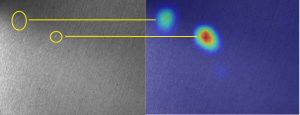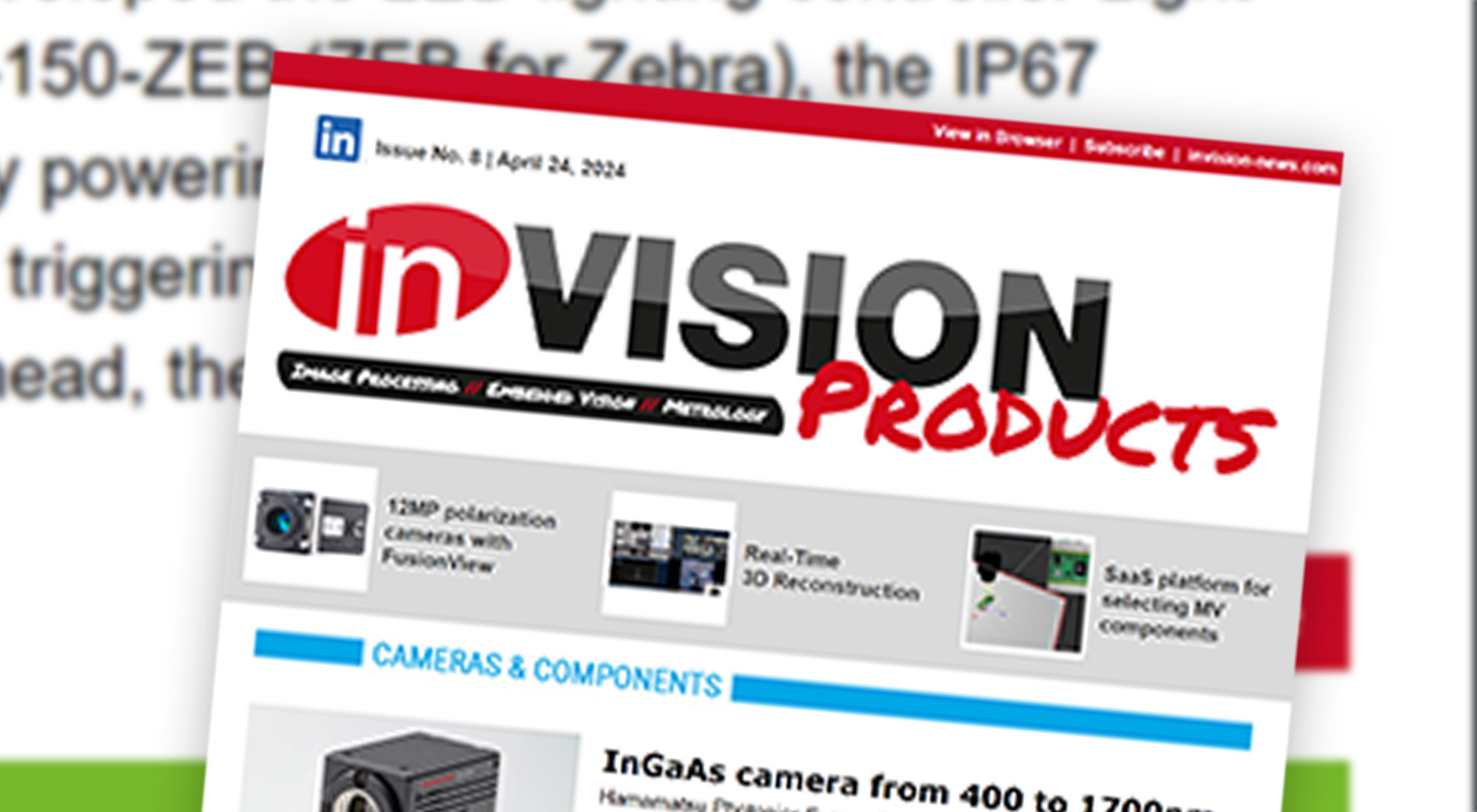Cover Story: Advances in Deep Learning for Industrial Inspections
The Astrocyte software of Teledyne Dalsa is a training tool based on Deep Learning algorithms that include classification, anomaly detection, object detection, segmentation and noise reduction. Non-experts in image processing can now train AI systems while reducing costs significantly.

Image 1 | Surface Inspection on Brushed Metal: Left: a plate of brushed metal with scratches (encircled); Right: the heatmap output of a classification algorithm showing the defects (Bild: Teledyne Dalsa)
The manufacturing industry is being turned on its head as AI, and deep learning transforms the way we create goods and how quality inspection is employed. The combination of software, new deep learning techniques, power of parallel processing, and ease-of-use tools is at the core of this transformation. Traditionally, hundreds, or even thousands, of high-quality, manually classified images were required to train an AI system and create a model that classifies objects with a high degree of predictability. Just gathering this type of dataset has proven to be an obstacle, hindering deep learning adoption into mainstream manufacturing environments. New technology advancements are making it easier for manufacturers to embrace deep learning as part of the inspection process. Today, users train deep learning systems with fewer bad images or even none. While deep learning software for machine vision has been around for more than a decade, it is now becoming more user-friendly and practical. As a result, manufacturers are moving from experimenting with deep learning software to implementing it.
Deep Learning vs. Traditional Methods
Deep learning is ideal for tasks that are difficult to achieve with traditional image processing methods. Typical environments that are suitable for deep learning are those where there is a lot of variables, such as lighting, noise, shape, color, and texture. For example, in food inspection, no two loaves of bread are exactly alike. Each loaf has the same ingredients, and each weighs the same amount, but the shape, color, and texture may be slightly different but still within the range of normality. Another example may be the ripeness of an apple. Ripeness could mean color, softness, or texture; however, there is a range of possibilities where an apple is considered ripe. It is in these types of environments where deep learning shines. Other examples are inspecting the surface finish quality, confirming the presence of multiple items in a kit, detecting foreign objects, and more, to ensure quality throughout the assembly process. A practical example showing the strength of deep learning is scratch inspection on textured surfaces like metal. Some of those scratches are less bright, and their contrast is in the same order of magnitude than that of the textured background itself. Traditional techniques usually fail to locate these types of defects reliably, especially when the shape, brightness, and contrast vary from sample to sample. Figure 1 illustrate scratches inspection on metal sheets. Defects are clearly shown via a heatmap which is a pseudo-color image highlighting the pixels at the location of the defect. Another example of defect inspection is the ability to classify a complex part as being good or bad. For instance metal screws are objects presenting a high degree of variation on their surface make it extremely difficult for traditional algorithms to isolate defects. Deep learning algorithms are very good at inspecting those type of objects.












